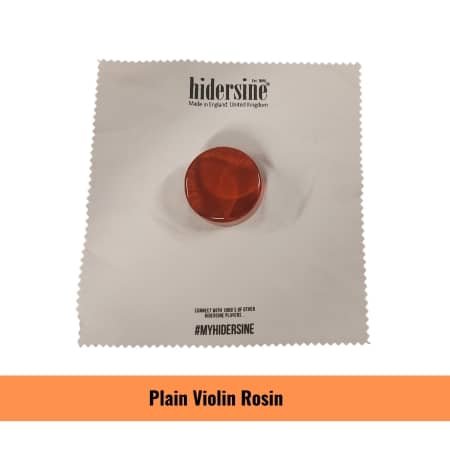What is Rosin and Why is it Important for Violin Bow?
How to Rosin a Violin Bow: A Beginner’s Guide
Rosining your violin bow is an essential part of playing the violin. It ensures that the bow grips the strings properly, producing the rich, resonant sounds we all love. Without rosin, your bow will slide across the strings without creating much sound. Let's dive into the steps of rosining your bow, making the process both fun and informative!
What is Rosin and Why is it Important for Violin Bow?
Rosin is a solid form of resin obtained from pines and other conifers. When applied to the bow hair, it provides the necessary friction between the bow and the strings. This friction is what produces sound. Rosining your bow is crucial because:
Enhanced Grip: Rosin provides the stickiness needed for the bow to grip the strings.
Improved Sound Quality: Properly rosined bows produce clearer, more consistent sound.
Bow Longevity: Regular application of rosin helps maintain the condition of the bow hair.
Have you ever wondered what gives your violin bow its gripping power? It’s all thanks to rosin—a solid form of resin derived from pines and other conifers. Let's explore why rosining your bow is so crucial!
Step-by-Step Guide to Rosining Your Violin Bow
There are two main types of rosin: light and dark. Light rosin is harder and less sticky, making it ideal for warm weather or for violins and higher-pitched string instruments. Dark rosin is softer and stickier, better suited for cooler climates and lower-pitched instruments like the cello or bass. As a beginner, light rosin is usually recommended for violins.
Pro Tip: Experiment with different brands and types of rosin to find what works best for your playing style and environment.
Preparing Your Rosin Cake for Use
If you're using a new cake of rosin, it may have a smooth, glass-like surface. To help the bow hair pick up the rosin, lightly score the surface with a key or a knife. Be careful not to dig too deep; you only need to create a few light scratches.
Pro Tip: Avoid touching the scored surface with your fingers to prevent oils from your skin from affecting the rosin.
How to Properly Tighten the Bow Hair
Before applying rosin, ensure your bow hair is properly tightened. The hair should be taut but not overly tight. A good rule of thumb is to tighten until there is about a pencil's width of space between the bow hair and the stick in the middle of the bow.
Pro Tip: Overtightening can damage the bow hair and stick, so always check the tension before playing.
How to Check for Even Rosin Application
Applying Rosin to the Violin Bow
After rosining, lightly run your finger along the bow hair. It should feel slightly sticky. If you notice any unevenness, apply a few more strokes of rosin to the areas that need it. Be careful not to over-rosin, as too much rosin can create a dusty mess and affect your sound quality.
Pro Tip: Wipe off excess rosin from the bow stick and violin strings to prevent build-up that can affect your instrument's performance.
Hold the rosin in your non-dominant hand and the bow in your dominant hand. Starting at the frog (the end of the bow you hold), gently rub the rosin on the bow hair. Use long, even strokes, moving towards the tip and back again. For a new bow, you might need 30-40 strokes to apply a sufficient amount. For a bow that has been previously rosined, 5-10 strokes should be adequate.
Pro Tip: Apply rosin with a light touch to avoid damaging the bow hair or creating too much dust.
Tips and Tricks for Maintaining Your Violin Bow
Regular Maintenance: Rosin your bow regularly, but not excessively. How often depends on how much you play; generally, a few strokes before each practice session should suffice.
Clean Your Strings: Wipe your strings with a soft cloth after playing to remove any excess rosin build-up.
Storage: Keep your rosin in its case or a small pouch to protect it from dust and dirt.
Experiment: Different brands of rosin can affect your sound differently. Don’t be afraid to try a few to see which works best for you.
Pro Tip: Regularly inspect your bow hair for wear and replace it as needed to maintain optimal performance.
Fun Fact: The Science Behind Rosin and Sound Production
When you draw a rosined bow across a string, the friction causes the string to stick and slip rapidly, creating vibrations. These vibrations travel through the bridge and into the body of the violin, amplifying the sound. This stick-slip phenomenon is what makes the violin sing!
Conclusion: Mastering the Art of Rosining Your Violin Bow
Rosining your violin bow is a simple yet essential task for any violinist. By following these steps, you’ll ensure your bow grips the strings effectively, producing beautiful and consistent sound. Ready to enhance your violin skills? Take Violin Lessons with us at Blanch Music either Face 2 Face Or Online!




